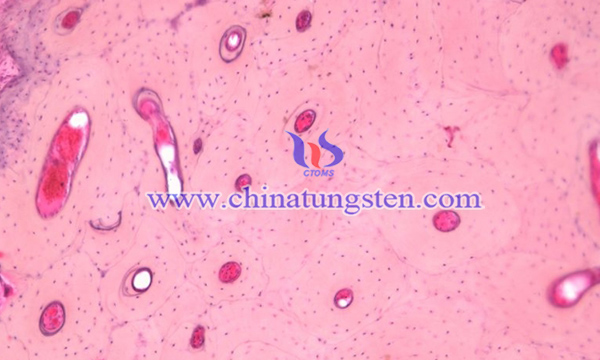Tungsten Accumulates in Bones, Raising Concerns over Safety
- Details
- Category: Tungsten's News
- Published on Friday, 27 April 2018 11:05
A new discovery by researchers from McGill University shows how and where tungsten accumulates in bones of mice exposed to the element through drinking water. The findings doubt the once-universal assumption that tungsten poses little or no health risk to the general human population.
Tungsten has a prevailing use in a lot of materials because it’s a really interesting metal -- it has a high melting point and is great when combined with other metals. It’s used in such things as ammunition or drill bits; it has also been proposed for use in medical applications such as materials that are implanted in the body or medications.
To date, research into tungsten's toxicity and possible role as a carcinogen has produced mixed results. Some studies have shown that other communities exposed to tungsten levels comparable to those in Fallon were not affected by a higher-than-normal incidence of cancer -- a finding that appeared to exonerate tungsten. But subsequent research has revealed that in subjects exposed to both tungsten and cobalt, tungsten appears to augment the toxicity of the other substance. These findings pointed to a need to better understand how tungsten accumulates in the body and in what form, and to what extent the body is capable of eliminating tungsten following exposure.

The McGill team's study on tungsten exposure in mice, published in Communications Chemistry, used powerful x-ray spectroscopy techniques to find answers to these questions. The results raise a number of concerns.
While tungsten has previously been shown to accumulate in bone, the McGill researchers found that the element didn't accumulate uniformly across bones; rather, it was concentrated in certain hot spots.
“We found that tungsten, once thought to be non-toxic and inert, does in fact accumulate heterogeneously in bone," said Cassidy VanderSchee, lead author of the study and doctoral student in the Department of Chemistry at McGill. "Not only that, we found that it accumulated in a chemically different form to that in which it was administered, which confirmed that tungsten is chemically active in the body."
The study showed that in mice exposed to high levels of tungsten through drinking water, the element accumulated in specific regions -- bone marrow and porous (or 'cancellous') bone tissue -- to a degree 10 times greater than background levels. The deposition of tungsten in cancellous bone suggests the element is incorporated during bone growth and remodelling, indicating that young, growing individuals are particularly susceptible.
The researchers also found that tungsten was retained in the bone's hard outer layer -- the cortex -- even after the mice were given tungsten-free water for a period of eight weeks after initial exposure. With the body unable to clear tungsten from this tissue, the bone effectively becomes a source of chronic exposure.
Of even greater concern was the finding that tungsten was changing form in the body. The results showed that the element was accumulating in a form resembling phosphotungstate, a known chemical catalyst with significant potential to intervene in the biological processes that occur in bone marrow and cancellous bone -- immune cell formation and bone growth among them.
“While research continues into the health risks posed by human exposure to tungsten, our study provides important insights into how the element accumulates in the body -- findings that are crucial to developing effective therapies for removing it," says McGill chemistry professor and senior author Scott Bohle.
- Tungsten Manufacturer & Supplier, Chinatungsten Online: www.chinatungsten.com
- Tungsten News & Prices of China Tungsten Industry Association: www.ctia.com.cn
- Molybdenum News & Price: news.molybdenum.com.cn
- Tel.: 86 592 5129696; Fax: 86 592 5129797; Email: sales@chinatungsten.com



 sales@chinatungsten.com
sales@chinatungsten.com